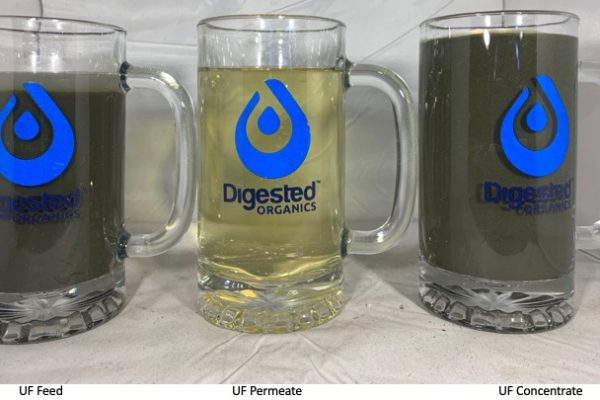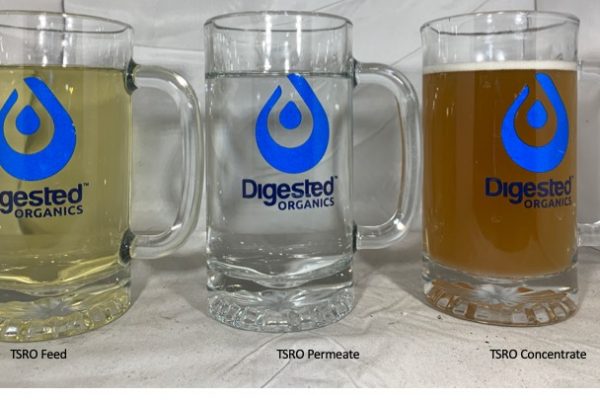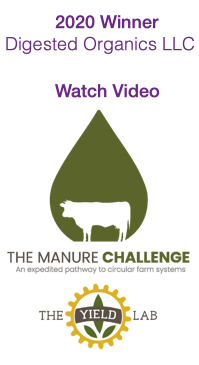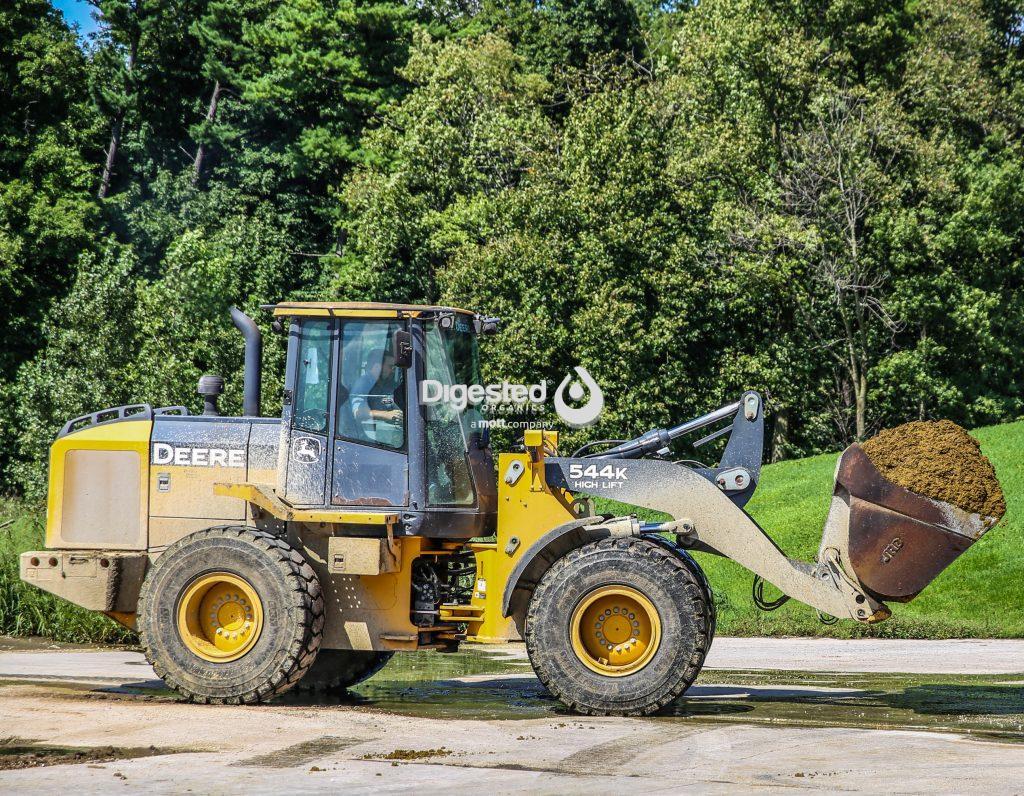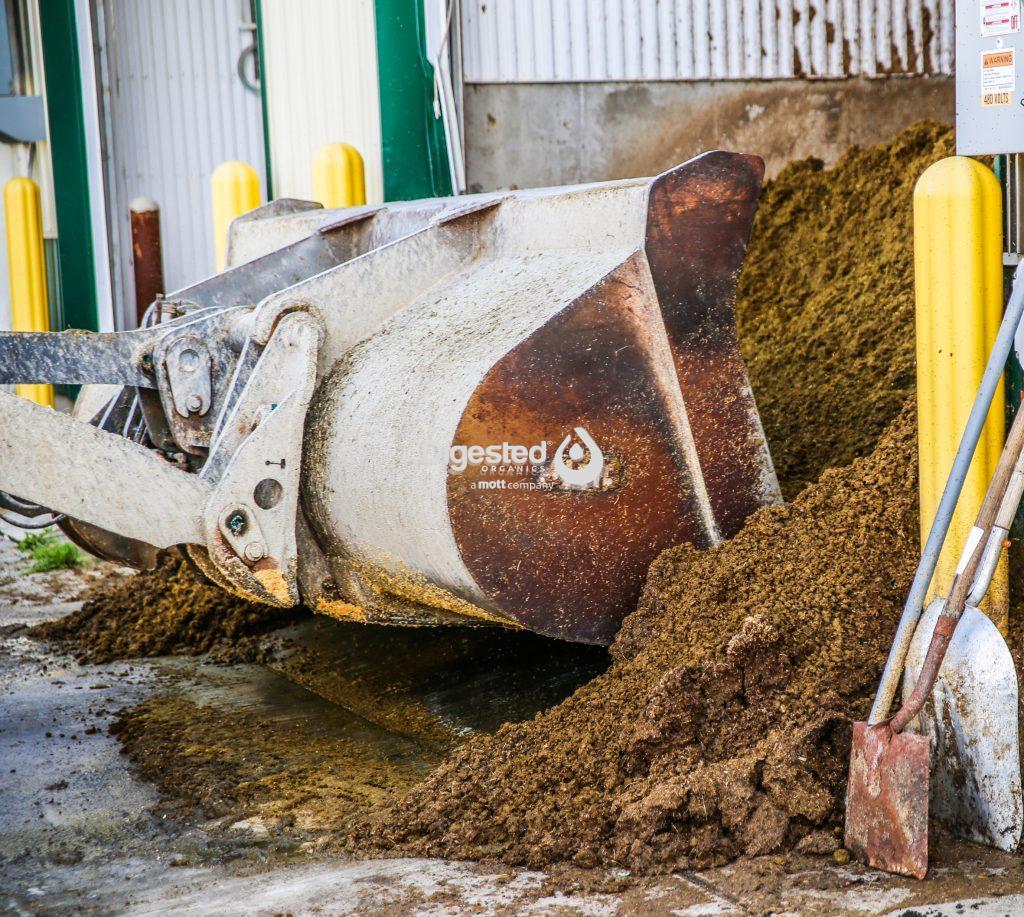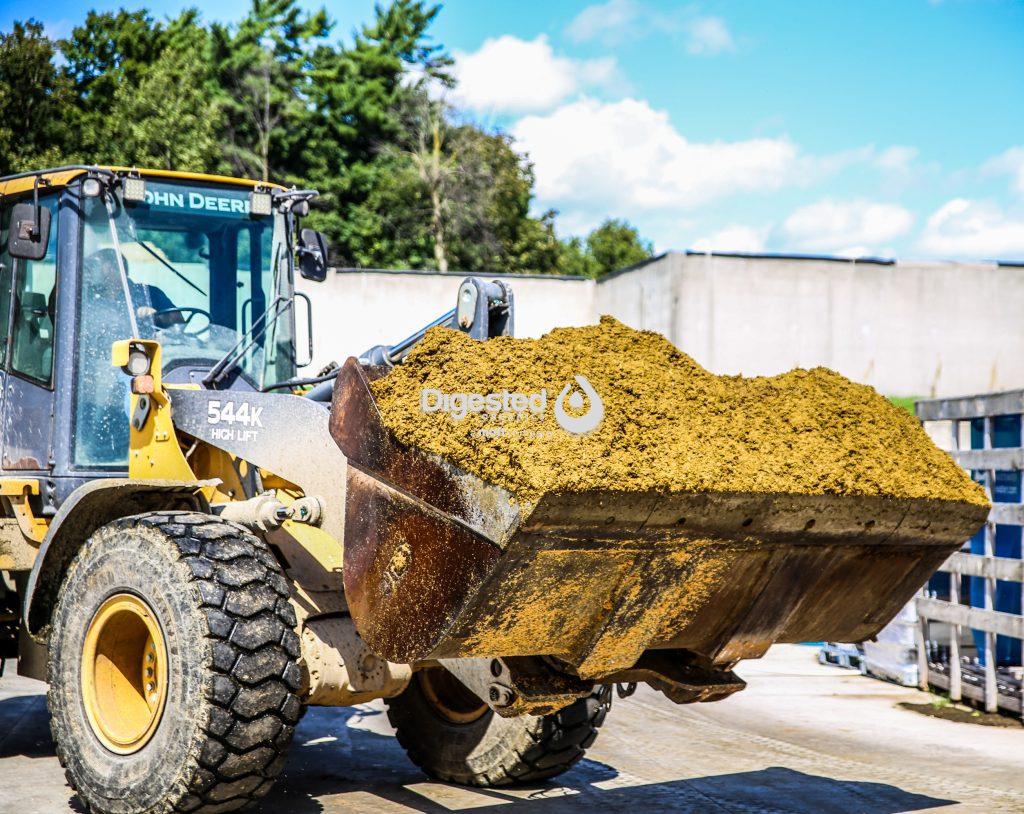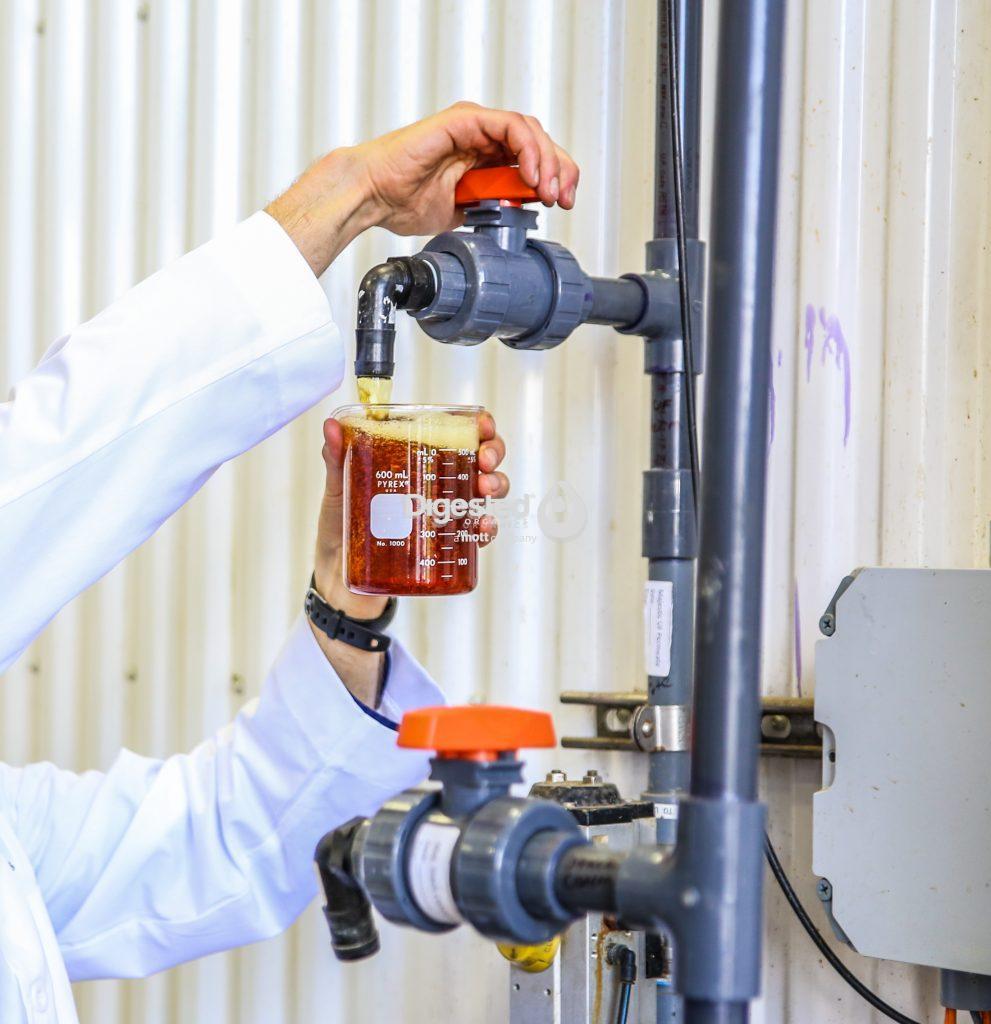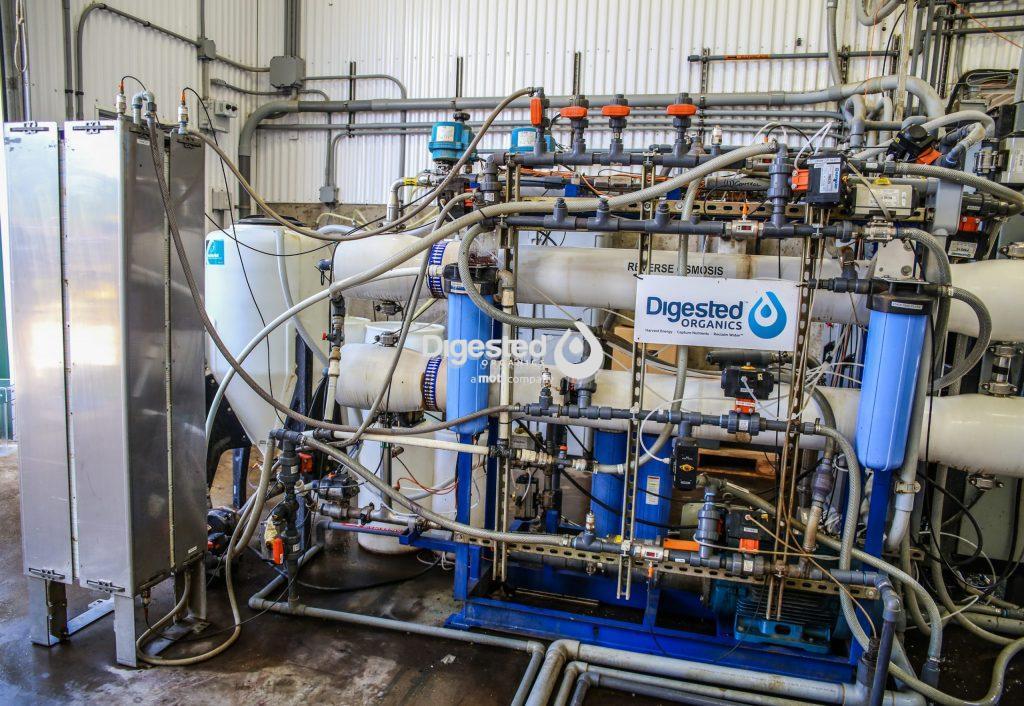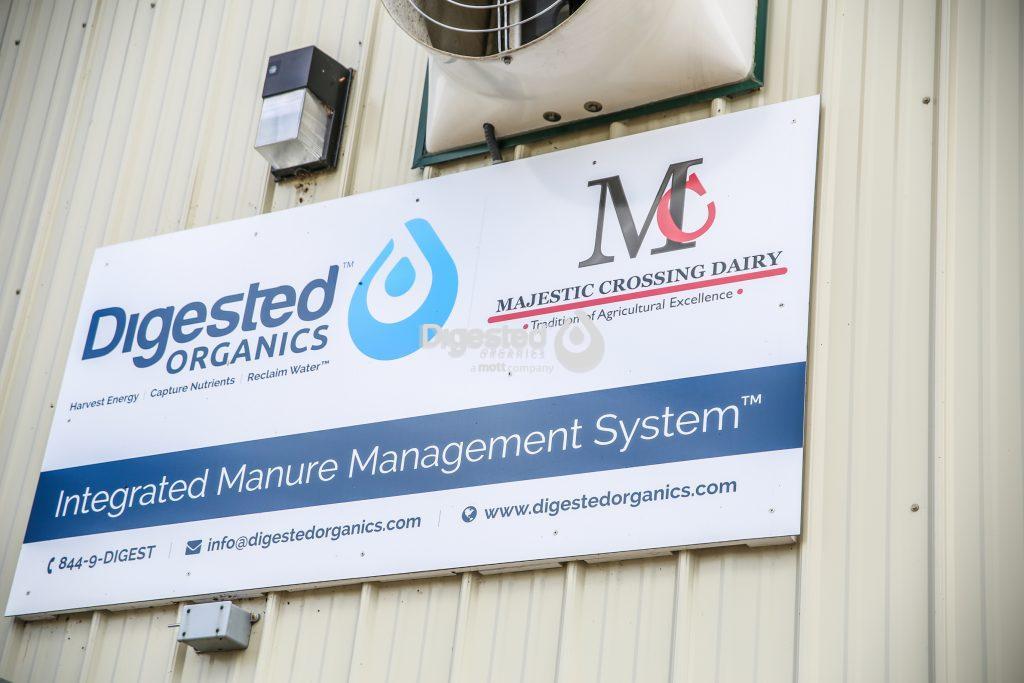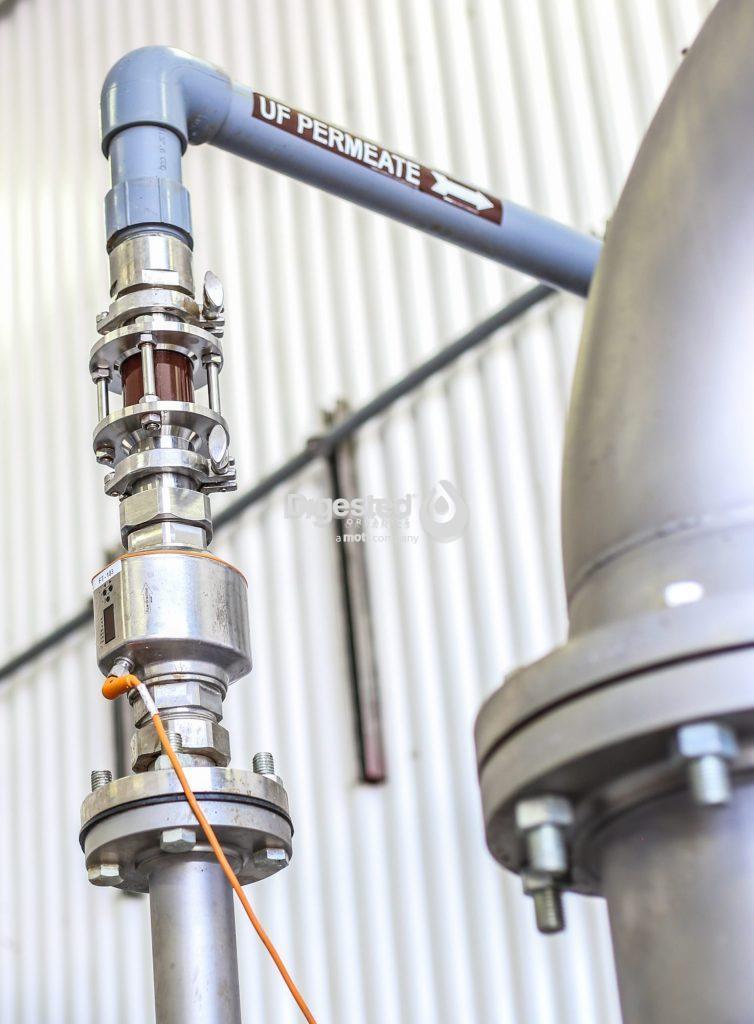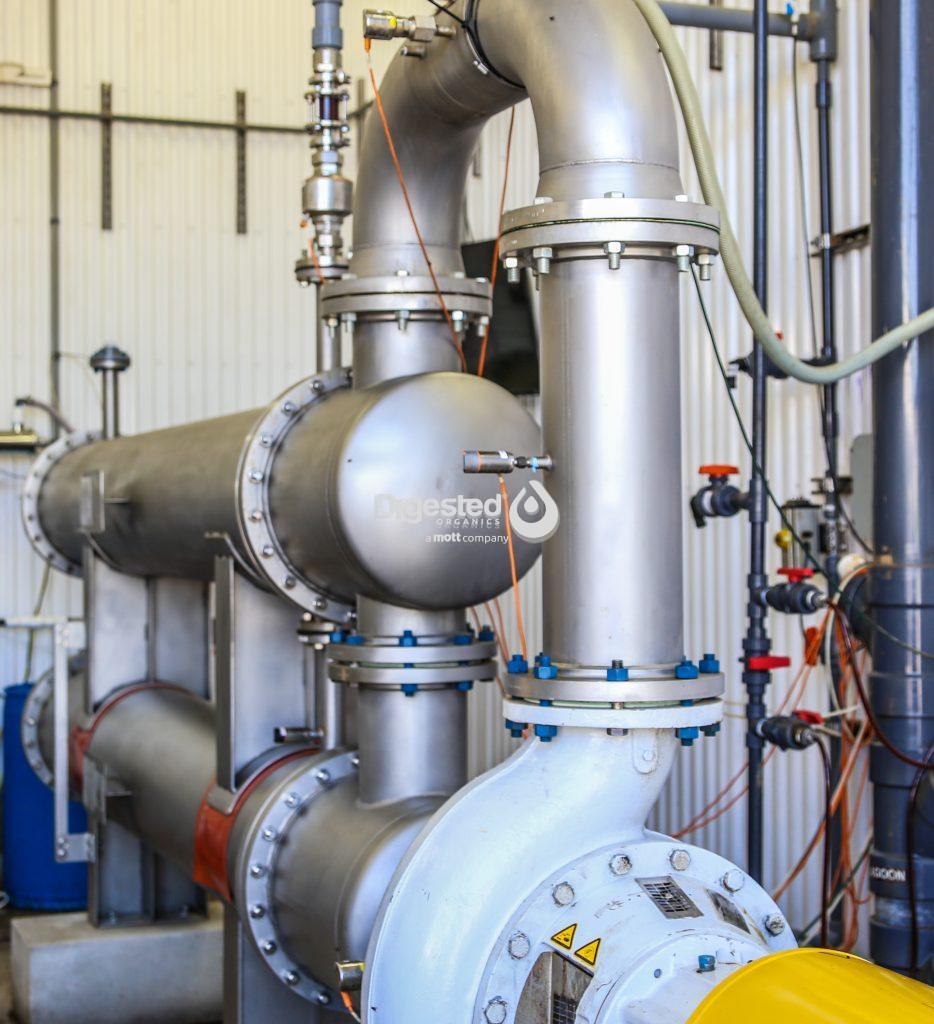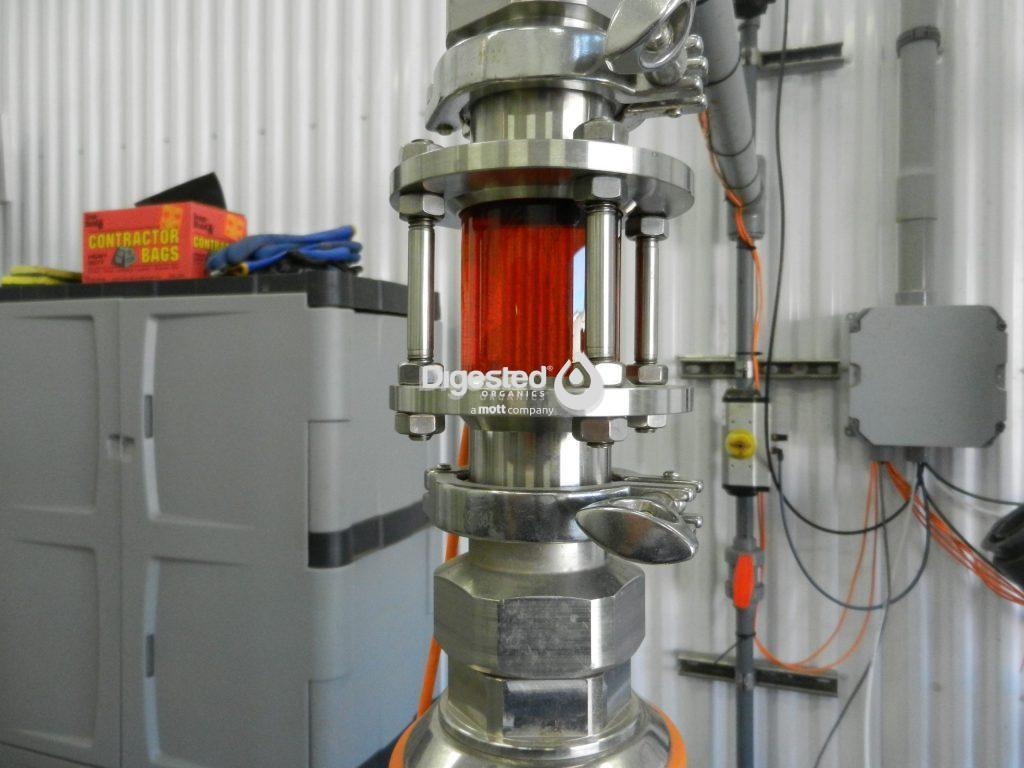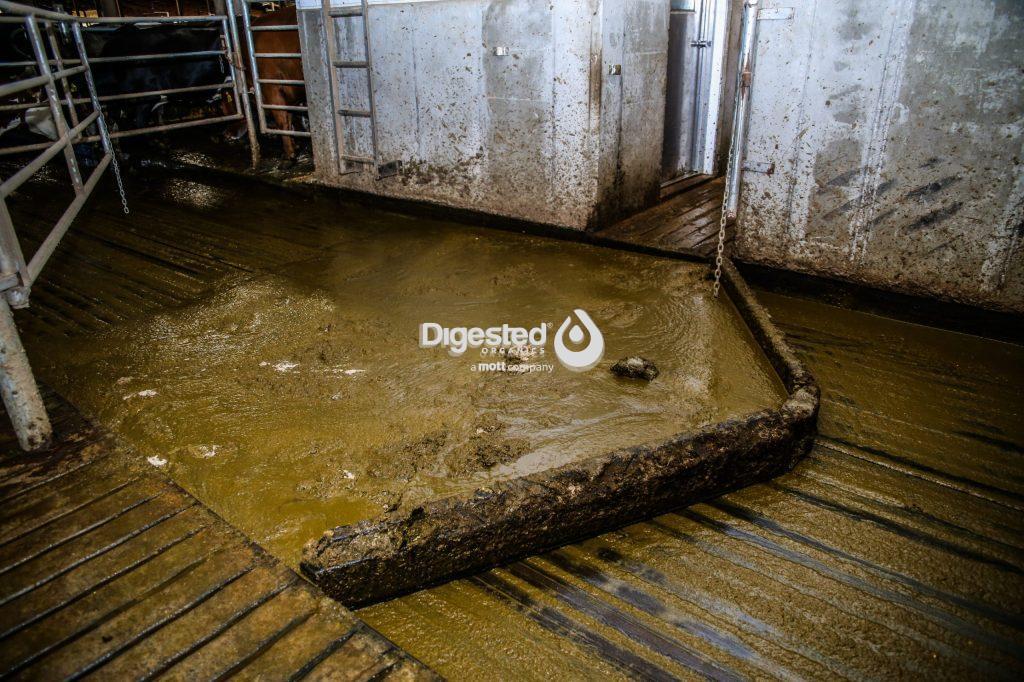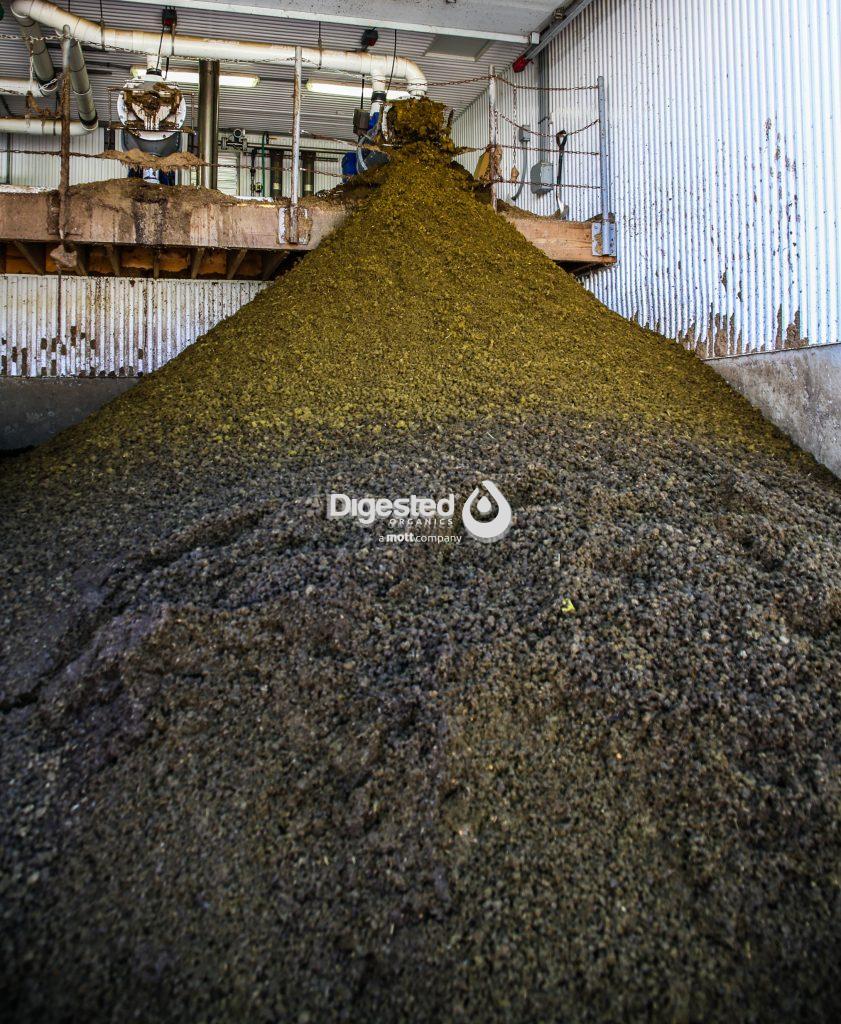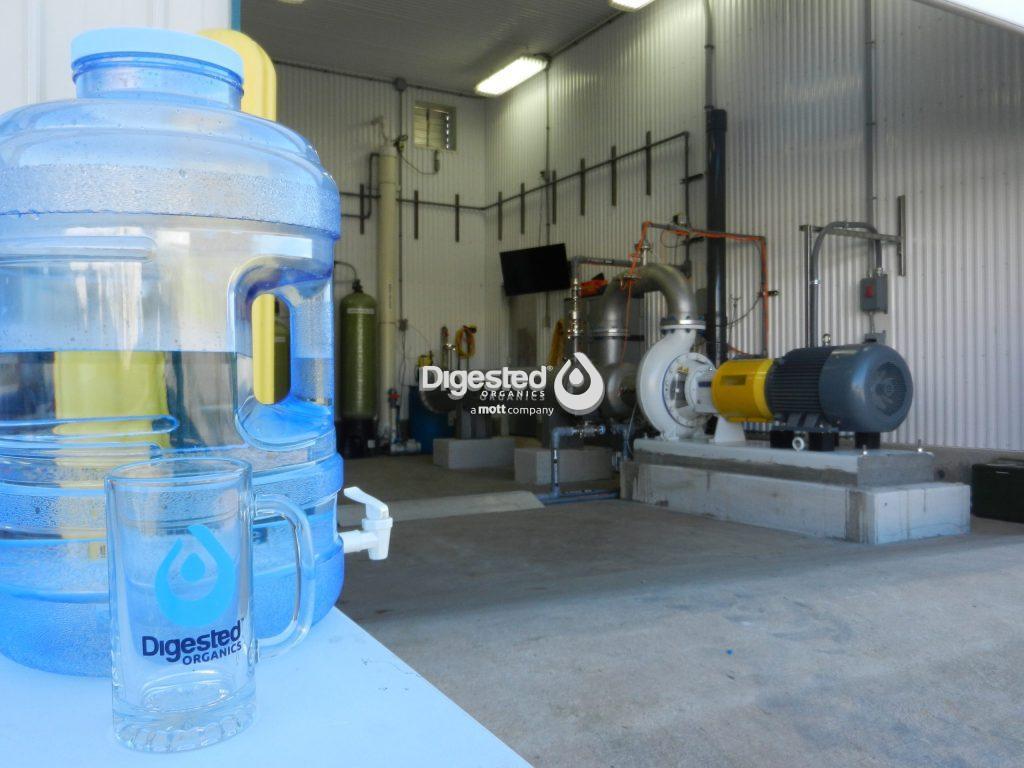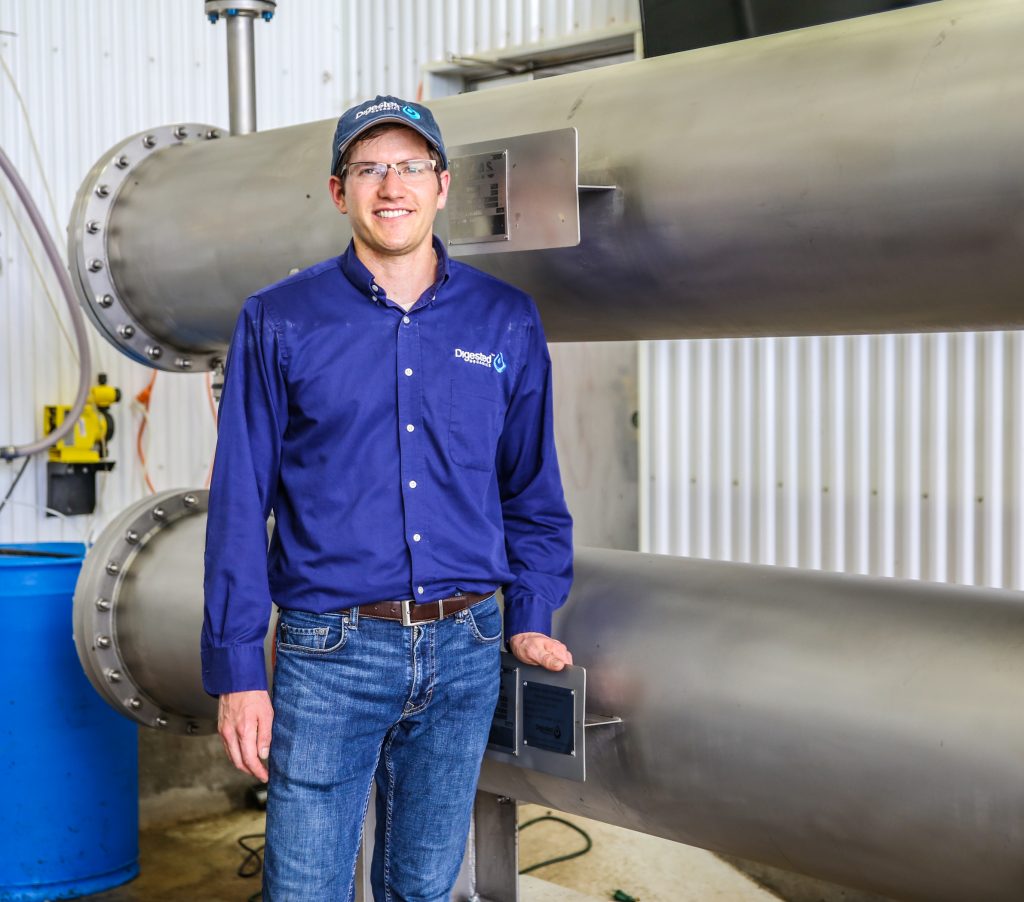Food Waste Digestate Treatment
For Food Waste Digester Facility
Client
Year
2020
Recovered about 90% of the UF permeate as clean water
- SWECO
- Ultrafiltration (UF)
- Two-Stage Reverse Osmosis™ (TSRO)
Case Study: Ultrafiltration, Food Waste Digester
A 100,000 GPD capacity Food Waste Digester facility form Michigan approached us to create clean water from their digester run-off. Digestate were first screened to remove large abrasive solids and fibers using a low-energy vibratory screen. Screened digested then filtered through our unique UF, designed to treat wastewater without the addition of polymers or processing aids, significantly reducing the operation cost.The UF permeate was of sufficient quality for sewer discharged.
Company Issue / Challenge
Manage Digester run-off, compliance with regulatory permit.
The cost for land application is high and runoff has few nutrients, so paying to truck this material to farm fields is not efficient.
Managing the storage and hauling of leachate is a constant challenge and requires coordination of various trucks throughout the year.
Concentrating the nutrients in the leachate for storage and later land application with manure would be most efficient.
What We Delivered
Impact & Benefits
Our leachate filtration system is designed to recover more than 90% of the liquid as clean water for direct discharge.
Analysis of Ultrafiltration Process Streams
| PARAMETER | Unit | UF Feed | UF Permeate | UF Concentrate | Percent Removed by UF |
|---|---|---|---|---|---|
| Total Solids | mg/L | 15,900 | 5,700 | 52,604 | 64% |
| Biochemical oxygen demand (BOD) | mg/L | 673 | <149.2 | NA | >78% |
| Chemical oxygen demand (COD) | mg/L | 16,460 | 800 | 41,900 | 95% |
| Ammoniacal Nitrogen | mg/L | 1,020 | 971 | 1,210 | 5% |
| Organic Nitrogen | mg/L | 650 | 39 | 3,439 | 94% |
| Total Kjeldahl nitrogen (TKN) | mg/L | 1,670 | 1,010 | 4,661 | 40% |
| Phosphorus | mg/L | 281 | 12.2 | 1,500 | 96% |
| Potassium | mg/L | 1,010 | 953 | 1,300 | 6% |
| Sulfur | mg/L | 84 | 25.2 | 407 | 70% |
| Calcium | mg/L | 441 | 141 | 1,821 | 68% |
| Magnesium | mg/L | 75 | 52.6 | 203 | 30% |
| Sodium | mg/L | 1,130 | 1,120 | 1,318 | 1% |
| Iron | mg/L | 33.2 | 0.23 | 196 | 99% |
| Manganese | mg/L | 0.793 | 0.071 | 4 | 91% |
| Zinc | mg/L | 1.66 | n.d. | 9 | 100% |
| Copper | mg/L | 0.42 | n.d. | 2 | 100% |
| Conductivity | ms/cm | 14.1 | 13.9 | NA | n/a |
| pH | S.U. | 7.87 | 8.04 | 8 | n/a |
n/a: not applicable; n.d.: not detected , NA: not analyzed
As expected, the UF removed the vast majority of the total solids, organic nitrogen, and phosphorus from the digested food waste sample, producing a transparent permeate. The COD reduction was 95% and the BOD reduction was greater than 78%.
Analysis of Two-Step Reverse Osmosis Process Streams
| PARAMETER | Unit | TSRO Feed | TSRO Permeate | TSRO Concentrate | Percent Removed by TSRO |
|---|---|---|---|---|---|
| Total Solids | mg/L | 5,700 | 200 | 28,100 | 96% |
| Chemical oxygen demand (COD) | mg/L | 800 | 22 | 5,400 | 97% |
| Ammoniacal Nitrogen | mg/L | 971 | 10.5 | 1,170 | 99% |
| Organic Nitrogen | mg/L | 39 | 0.2 | 60 | 99% |
| Total Kjeldahl nitrogen (TKN) | mg/L | 1,010 | 10.7 | 1,230 | 99% |
| Phosphorus | mg/L | 12.2 | n.d. | 9.69 | 100% |
| Potassium | mg/L | 953 | 2.7 | 1,650 | 100% |
| Sulfur | mg/L | 25.2 | n.d. | 74.4 | 100% |
| Calcium | mg/L | 141 | n.d. | 113 | 100% |
| Magnesium | mg/L | 52.6 | n.d. | 164 | 100% |
| Sodium | mg/L | 1,120 | 114 | 8,280 | 90% |
| Iron | mg/L | 0.23 | n.d. | 0.38 | 100% |
| Manganese | mg/L | 0.071 | n.d. | 0.157 | 100% |
| Zinc | mg/L | n.d. | n.d. | 0.05 | 100% |
| Copper | mg/L | n.d. | n.d. | 0.1 | 100% |
| Conductivity | ms/cm | 13.9 | 0.71 | 39.3 | n/a |
| pH | S.U. | 8.04 | 5.71 | 8.27 | n/a |
n/a: not applicable; n.d.: not detected , NA: not analyzed
These data indicate that the TSRO produced very clean water with very low levels of N, P, and K. Only 10.1 mg/L of ammonia and 17.2 mg/L of total nitrogen was detected in the RO permeate. The high levels of sodium in the concentrate are an artifact of batch concentration on our pilot unit and is not expected commercially.
Liquid Pictures
Scroll the gallery to see pictures of the materials from our filtration equipment.
Are you facing a similar business challenge?
Call today and get discounted pilot testing when you mention this case study!

